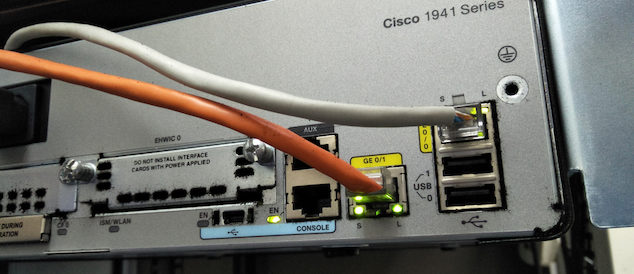Opinion
Broadband: $6 billion plan creates public safety gap
 High-cables connected to a server. (Photo: Everything You Need, via Shutterstock)
High-cables connected to a server. (Photo: Everything You Need, via Shutterstock)With explosive wildfires once again raging across California, public safety must be paramount as legislators take final action on bills before adjourning the 2021 session on Sept 10. Resiliency of electric and communications infrastructure has never been more vital to public safety.
Action is needed now to ensure that Gov. Newsom’s $6 billion broadband plan enacted in July protects all Californians no matter which provider or network delivers their communications service.
The new backup power requirements deemed safety-critical by the CPUC do not currently apply to the networks that will be funded by the governor’s current $6 billion broadband plan.
When wildfires take down cell towers and other communications infrastructure, consumers lose their lifeline to the world and cannot receive emergency alerts, evacuation orders, and public safety updates.
Similarly, at the very time when high fire risk weather conditions lead electric utilities to turn off power, so their lines do not spark fires, communications networks that rely on electricity need backup power to continue serving consumers.
The California Public Utilities Commission (“CPUC”) has determined that, to protect the safety of all Californians, communications networks must be resilient and accordingly ordered all communications service providers to have 72 hours of backup power. To comply, cable companies, traditional telephone companies, and mobile wireless service providers have developed backup power plans to invest hundreds of millions of dollars for deploying portable generators, batteries and other technologies intended to keep their networks operational when the power goes out.
But the new backup power requirements deemed safety-critical by the CPUC do not currently apply to the networks that will be funded by the governor’s current $6 billion broadband plan.
The plan allocates $2 billion for the Public Utilities Commission to fund last-mile broadband projects to connect unserved households lacking internet access. It allocates another $3.25 billion for the California Department of Technology to construct a statewide middle-mile broadband network – the equivalent of the state highway system that last-mile providers can use to connect the lines that reach household locations.
Californians should be protected no matter who provides their communications service.
The intent is to finance new service providers to serve consumers lacking service, especially in remote rural unserved areas, with a heavy emphasis on funding local governments and nonprofit entities to become communications service providers.
But these networks and providers that the $6 billion plan will fund are not required to comply with backup power requirements. Nor are they required to comply with other public safety measures adopted in recent years by the Legislature, commission, and California Office of Emergency Services.
These include requirements to increase infrastructure inspections in high fire danger areas, network outage reporting, and coordination with electric utilities when they proactively shut off power, among others. The policy rationale for each of these requirements applies equally to all networks, no matter how they are funded.
Californians should be protected no matter who provides their communications service.
The Governor surely could not have intended for the $6 billion broadband plan to create a gap in public safety protection for any Californian. To protect all consumers statewide, the Legislature must act now to ensure that the Department of Technology and Public Utilities Commission require compliance with these public safety measures as a condition of any funding award under the new broadband plan.
—
Editor’s Note: Carolyn McIntyre is president of the California Cable & Telecommunications Association.
Want to see more stories like this? Sign up for The Roundup, the free daily newsletter about California politics from the editors of Capitol Weekly. Stay up to date on the news you need to know.
Sign up below, then look for a confirmation email in your inbox.

Leave a Reply